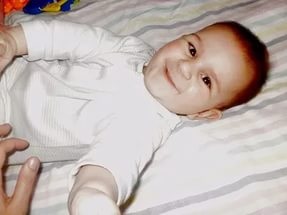
The central nervous system (CNS) is the main part nervous system human, which consists of a cluster of nerve cells. In humans, it is represented by the spinal cord and brain. The departments of the central nervous system regulate the activity of individual organs and systems of the body, and generally ensure the unity of its activity. With lesions of the central nervous system, this function is impaired.
Damage to the central nervous system can occur in a child both during the period prenatal development(perinatal) and during childbirth (intranatal). If harmful factors affected the child at the embryonic stage of intrauterine development, then severe defects incompatible with life may occur. After eight weeks of pregnancy, damaging influences no longer cause gross violations, but sometimes slight deviations appear in the formation of the child. After 28 weeks of intrauterine development, damaging effects will not lead to malformations, but a normally formed child may develop some kind of disease.
Perinatal damage to the central nervous system (PP CNS)
This pathology is most recorded in children of the first year of life. This diagnosis implies a violation of the function or structure of the brain of various origins. PP CNS occurs in the perinatal period. It includes antenatal (from the 28th week of intrauterine development to the onset of childbirth), intranatal (the act of childbirth itself) and early neonatal (the first week of a child's life) periods.
The symptoms of PP CNS include an increase in neuro-reflex excitability; decreased muscle tone and reflexes, short-term convulsions and anxiety; muscle hypotension, hyporeflexia; respiratory, cardiac, renal disorders; paresis and paralysis, etc.
The following causes influence the occurrence of perinatal CNS damage: maternal somatic diseases, malnutrition and immaturity of a pregnant woman, acute infectious diseases during pregnancy, hereditary diseases, metabolic disorders, pathological pregnancy, and unfavorable ecological situation.
According to their origin, all perinatal lesions of the central nervous system can be divided into:
- Hypoxic-ischemic damage to the central nervous system. Hypoxic-ischemic damage to the central nervous system occurs due to a lack of oxygen supply to the fetus or its utilization during pregnancy or childbirth;
- Traumatic damage to the central nervous system. Traumatic damage to the central nervous system is caused by traumatic damage to the fetal head at the time of delivery;
- Hypoxic-traumatic lesion of the central nervous system. Hypoxic-traumatic damage to the central nervous system is characterized by a combination of hypoxia and damage to the cervical spine and the spinal cord located in it;
- Hypoxic-hemorrhagic lesion of the central nervous system. Hypoxic-hemorrhagic damage to the central nervous system occurs during birth trauma and is accompanied by impaired cerebral circulation up to hemorrhages.
AT last years diagnostic capabilities of children's medical institutions have improved significantly. After one month of a child's life, a neurologist can determine precise character and the degree of CNS damage, as well as predict the further course of the disease, or completely remove the suspicion of a brain disease. The diagnosis can be characterized by a complete recovery or the development of minimal CNS disorders, as well as severe diseases that require mandatory treatment and regular monitoring by a neurologist.
Treatment of the acute period of perinatal lesions of the central nervous system is carried out in a hospital. Drug therapy, massage, physical therapy and physiotherapy, acupuncture, as well as elements of pedagogical correction are used as the main treatment for the disease.
Organic lesion of the central nervous system
This diagnosis means that the human brain is defective to a certain extent. Pathological changes occur in the substance of the brain. A mild degree of organic damage to the central nervous system is inherent in almost all people and does not require medical intervention. But here the average and severe degree of this disease is already a violation of the activity of the nervous system. Symptoms include freezing spells, sleep disturbance, irritability, rapid distractibility, repetition of phrases, and daytime enuresis. Vision and hearing may deteriorate, coordination of movements may be disturbed. Human immunity decreases, various colds occur.
The causes of organic lesions of the central nervous system are divided into congenital and acquired. The former include cases when, during pregnancy, the child's mother had an infection (ARI, influenza, tonsillitis), took certain medications, smoked and drank alcohol. During periods of psychological stress of the mother one system blood supply can transfer stress hormones to the body of the fetus. The influence is exerted by sudden changes in temperature and pressure, exposure to radioactive and toxic substances contained in the air, dissolved in water, food, etc.
Diagnosing an organic lesion of the central nervous system is quite simple. An experienced psychiatrist can determine the presence or absence of organics by the child's face. Nevertheless, the types of disorders in the brain are determined by laboratory diagnostics, which is based on a series of procedures that are harmless to the body and informative for the doctor: ultrasound diagnostics of the brain, electroencephalograms, and rheoencephalograms.
Organic treatment is a very long process. It is mainly medicinal. Drugs are used to treat organic damage to the central nervous system. For example, nootropic drugs can improve brain activity. Vascular preparations are used.
Often, children are diagnosed with "residual lesion of the HNS." Residual organic lesions of the central nervous system are present in children mainly as residual effects of birth trauma and brain disorders. It manifests itself as a disorder of associative thinking, and in more severe cases, neurological disorders. Treatment is prescribed by a doctor. Various elements of pedagogical correction are used, exercises for concentration of attention, classes with a psychologist and a speech therapist are useful.
The consequences of damage to the central nervous system depend primarily on the degree of the disease. It is possible both a complete recovery and a delay in mental, motor or speech development in a child, various neurological reactions, etc. It is important that during the first year of life the child receives a full rehabilitation.
Help children with central nervous system disease
On the this moment there are no children with this diagnosis in the care of our foundation. However, you can help sick children with other diagnoses!
Damage to the central nervous system in newborns is the result of a pathology of intrauterine development or a number of other reasons that lead to serious complications in the functioning of the body. Diagnose such lesions in almost 50% of infants. More than half, even almost two-thirds, of these cases occur in premature babies. But, unfortunately, there are pathologies in full-term children.
Most often, doctors call the main cause of damage to the central nervous system the difficulty in bearing, the influence of negative factors on the fetus. Among the sources of the problem:
- Lack of oxygen, or hypoxia. Such a condition arises in the case of a pregnant woman working in hazardous production, smoking, infectious diseases, which could have been immediately before conception, previous abortions. All this disrupts blood flow and oxygen saturation in general, and the fetus receives it from the mother's blood.
- Birth trauma. They are considered unlikely causes of CNS damage, but it is assumed that trauma can lead to disturbances in maturation and further development central nervous system.
- Metabolic disease. This happens for the same reasons as hypoxia. Both drug addiction and alcoholism lead to dysmetabolic pathologies. The use of strong medications also affects.
- Infections transmitted by the mother during pregnancy. The viruses themselves can adversely affect the development of the fetus. But there are a number of diseases that are considered critical for the life of the fetus. These include rubella and herpes. However, any pathogenic bacteria and microbes can also cause irreversible negative processes in the child's body even in the womb.
Varieties of CNS lesions
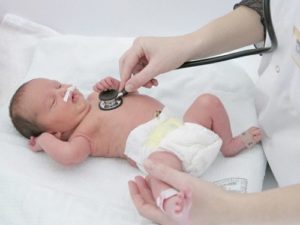 Each of the reasons leads to the development of a certain pathology, the severity of which affects the possibility of recovery and complete rehabilitation of the newborn.
Each of the reasons leads to the development of a certain pathology, the severity of which affects the possibility of recovery and complete rehabilitation of the newborn.
- lack of oxygen
Hypoxia of the fetus while still in the womb can cause such pathologies:
- cerebral ischemia. At 1 degree of severity, depression or, conversely, excitation of the central nervous system in the baby can be noted. The condition usually resolves within a week. Grade 2 severity can be recognized by short-term convulsions, increased intracranial pressure, more prolonged disruption of the functioning of the nervous system. In the most difficult situation complications lead to epileptic seizures, serious pathologies of the brain stem, as well as increased intracranial pressure. Often the result is coma and progressive CNS depression.
- Hemorrhage. This phenomenon can affect the ventricles and the substance of the brain, or subarachnoid hemorrhage occurs. Manifestations of such consequences are convulsions, and invariably increased intracranial pressure, and hydrocephalus, shock and apnea, coma. In mild cases, there are often no symptoms. Sometimes the only sign of a problem is hyperexcitability or, conversely, CNS depression.
- birth trauma
 The consequences differ according to the type of trauma that occurred during childbirth:
The consequences differ according to the type of trauma that occurred during childbirth:
- Intracranial trauma can lead to hemorrhage with convulsions and increased intracranial pressure. Among other consequences, violation of cardiac and respiratory activity, hydrocephalus, coma, hemorrhagic infarction.
- Damage to the spinal cord leads to hemorrhage in this organ with stretching or tearing. The result can be impaired respiratory function, motor activity and spinal shock.
- Damage to the peripheral nervous system. These are complications such as damage to the brachial plexus, which can lead to total paralysis, impaired respiratory function. Pathology of the phrenic nerve can lead to complications in the functioning of the respiratory system, although most often it occurs without obvious signs. The defeat of the facial nerve becomes apparent if, during the crying of the crumbs, the distortion of the mouth is noted.
- Metabolic disorder
Among the consequences of dysmetabolic lesions:
- Nuclear jaundice, which is accompanied by convulsions, apnea, etc.
- Decreased magnesium levels, leading to hyperexcitability and seizures.
- Too much sodium is the cause of increased blood pressure and increased heart rate and respiration.
- An increased concentration of glucose in the blood, which causes CNS depression, convulsions, although it can often occur without any symptoms.
- Reduced sodium content is the cause of lowering blood pressure and depression of the central nervous system.
- An increased concentration of calcium causes tachycardia, convulsions, muscle spasms.
- Infectious diseases
Infectious diseases that can cause damage to the central nervous system of the fetus include rubella, syphilis, herpes, cytomegalovirus, and toxoplasmosis. Of course, past illnesses do not necessarily lead to pathologies in the development of crumbs, but significantly increase their risk. Doctors also note a number of diseases that cause problems even after the birth of a baby. Among these are candidiasis, Pseudomonas aeruginosa, staphylococci, sepsis and streptococci. Such phenomena can cause hydrocephalus, increased intracranial pressure, meningeal syndrome and focal disorders.
Development of CNS lesions
In the process of development of lesions of the central nervous system, doctors distinguish three main stages:
- spicy;
- restorative;
- Exodus.
Acute period
This period lasts for about a month. Its course depends on the severity of the damage. Lesions of the mildest form are shudders, tremors of the chin, increased excitability, sudden movements of the limbs, abnormal states of muscle tone, and sleep disturbances.
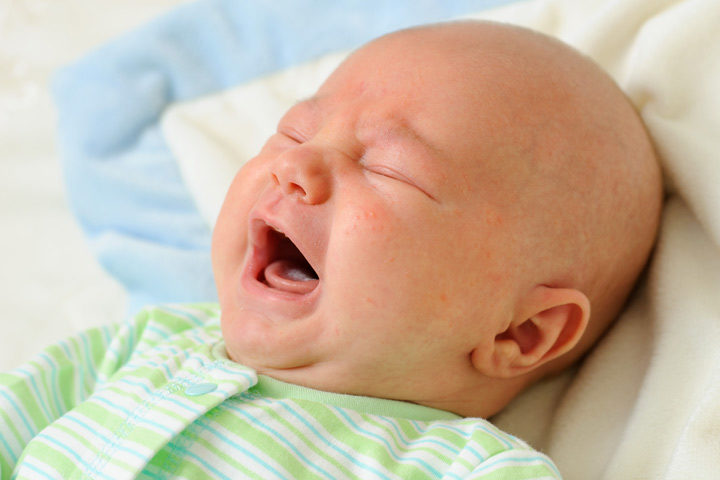
The baby may cry often and for no reason.
2 severity is manifested at this time by a decrease motor activity and muscle tone, reflexes will be weakened, especially sucking, which an attentive mother will definitely notice. In this case, by the end of the first month of life, such symptoms may be replaced by hyperexcitability, marble skin color, flatulence and frequent regurgitation.
Often at this time, children are diagnosed with hydrocephalic syndrome. Its most obvious symptoms include a rapid increase in head circumference, an increase in intracranial pressure, which is manifested by a bulge of the fontanel, unusual eye movements.
With the greatest severity, coma usually occurs. Such complications leave the child in the hospital under the supervision of doctors.
rehabilitation period
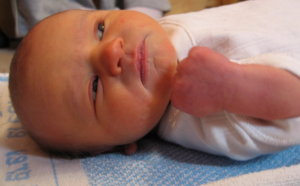 Interestingly, it is the recovery period that can be more difficult than the acute one, if there were no symptoms as such in the first months. The second period lasts approximately from 2 to 6 months. This phenomenon is expressed as follows:
Interestingly, it is the recovery period that can be more difficult than the acute one, if there were no symptoms as such in the first months. The second period lasts approximately from 2 to 6 months. This phenomenon is expressed as follows:
- the baby almost does not smile, does not show emotions;
- the baby is not interested in rattles;
- the baby's cry is rather weak;
- the child practically does not gurgle.
If in the first period the symptoms were present quite clearly, then from the second month of life they can, on the contrary, decrease and disappear, but this does not mean that treatment should be completely stopped. This only gives a reason to understand that the child is really recovering.
Outcome of CNS damage
By about a year old, the consequences of lesions of the central nervous system become apparent, although the main symptoms go away. The result is:
- developmental delay - psychomotor, physical or speech;
- hyperactivity, which affects in the future the ability to concentrate, learn, remember something, is also expressed in increased aggressiveness and hysteria;
- cerebroasthenic syndrome - poor sleep, mood swings, meteorological dependence;
- epilepsy, cerebral palsy, hydrocephalus are pathologies that develop with especially severe lesions of the central nervous system.
Diagnostics
Obviously, the consequences of damage to the central nervous system can be quite serious, so it is important to diagnose them in a timely manner. One examination of a newborn is usually not enough. At the slightest suspicion of pathology, doctors prescribe computed tomography, ultrasound of the brain, x-ray of the brain or spinal cord, depending on the assumptions about the localization of hemorrhages or other complications.
Treatment
The development of consequences and complications of CNS lesions depends on the timeliness of diagnosis and taking measures. Therefore, first aid to such crumbs must be provided in the first hours of life.
First of all, doctors seek to restore the activity of the lungs, heart, kidneys, normalize metabolism, eliminate convulsions, and seek to stop edema that forms in the lungs and brain. It is important at this point to normalize and intracranial pressure.
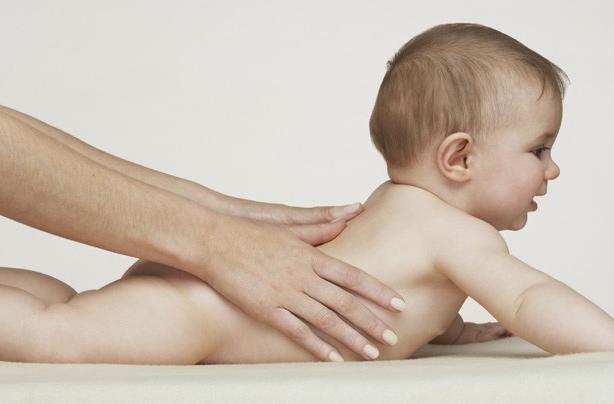
A baby with damage to the central nervous system needs preventive massage
If the measures taken have not led to the complete normalization of the infant's condition, he is left in the neonatal pathology department to continue rehabilitation. At this stage of treatment, antibacterial or antiviral therapy, drug treatment to restore brain activity is possible. To do this, the baby receives drugs to improve blood circulation and maturation of brain cells.
An important step in any rehabilitation are non-drug methods. These include gymnastics, massage, physiotherapy, paraffin therapy, etc.
With positive dynamics and elimination of symptoms of CNS lesions, the baby and mother are discharged with the following recommendations:
- regular examination by a neurologist;
- the use of non-pharmacological methods of recovery;
- maximum protection of the baby from infection;
- establishing a comfortable and constant temperature and humidity level at home;
- careful handling - no harsh sounds and excessively bright light.
With constant monitoring, a large number of children are fully restored and eventually removed from the register of a neurologist. The 3rd degree of severity of the lesions makes it necessary to regularly take courses of medications that normalize many life processes and help the baby recover more effectively.
The best solution is always the prevention of lesions of the central nervous system of the newborn. For this, doctors recommend planning a pregnancy in advance, being examined and giving up bad habits. If necessary, you should undergo antiviral therapy, get vaccinated, and normalize hormonal levels.
If the defeat nevertheless happened, do not despair: doctors, as a rule, immediately take measures to provide first aid. Parents, on the other hand, need to be patient and not give up - even the most difficult conditions are amenable to changes in a positive direction.
It happens that in the maternity hospital or a little later, at a pediatrician's appointment, a newborn child is given complex diagnoses regarding the state of the central nervous system (CNS). What is hidden behind the words "hypertensive-hydrocephalic syndrome" or "vegetative-visceral dysfunction syndrome" and how can these conditions affect the health and development of a child? Is it possible to treat CNS lesions? Natalya Pykhtina, a specialist in pediatric rehabilitation, is the head of the clinic of the same name.
The doctor receives the first information about the state of the central nervous system in the first minutes and hours after the baby is born, even in the delivery room. Everyone has heard of the Apgar scale, according to which the viability of a child is assessed by five main visible signs - heartbeat, skin color, respiration, reflex excitability and muscle tone.
Why is it important to correctly assess the motor activity of an infant? Because it provides information about the state of the spinal cord and brain, their functionality, which helps to recognize both minor deviations and serious pathologies in time.
So, the greatest attention is paid to the degree of symmetry of the movements of the limbs: their pace and volume should be the same on both sides, that is, on the left arm and left leg and right hand and legs, respectively. Also, the doctor conducting the initial examination of the newborn takes into account the clarity and severity of unconditioned reflexes. So the pediatrician receives information about the activity of the baby's central nervous system and finds out whether it functions within the normal range.
Damage to the central nervous system in a child occurs in two ways - in utero or during childbirth. If developmental abnormalities arose in the fetus during the embryonic stage of intrauterine development, then they often turn into defects that are incompatible with life, or extremely severe and not amenable to treatment and correction.
If the damaging effect was on the fetus after, this will not affect the child in the form of gross deformity, but may well cause minor deviations that will have to be treated after birth. Negative effects on the fetus later dates - after- in the form of defects it will not manifest itself at all, but it can become a catalyst in the event of diseases in a normally formed child.
It is very difficult to predict which specific negative factor and at what period of pregnancy will cause irreparable damage to the fetus. Therefore, the expectant mother needs to be extremely careful and monitor her health even before the moment of conception. Preparing for pregnancy is an important step in family planning, because the child's health can be affected by both bad habits mother, as well as her chronic diseases, hard work and unhealthy psychological state.
It is important for the future life of the child and how exactly he will be born. It is at the time of childbirth that there is a danger of damage in the second way - intranatally. Any improper intervention or, conversely, the lack of timely assistance is highly likely to negatively affect the baby. At risk are premature births, as well as births at the scheduled time, but rapid or, conversely, protracted.
The main causes of CNS damage in newborns are oxygen starvation, which leads to hypoxia, and birth trauma. Less obvious and diagnosable causes are less common: intrauterine infections, hemolytic disease of the newborn, malformations of the brain and spinal cord, hereditary metabolic disorders or chromosomal pathology.
Doctors distinguish several syndromes of CNS pathology in newborns.

Hypertension-hydrocephalic syndrome- this is an excessive accumulation of cerebrospinal fluid in the ventricles and under the membranes of the brain. To identify this syndrome in an infant, an ultrasound of the brain is performed and data on an increase in intracranial pressure are recorded (according to echoencephalography - EEG).
In pronounced severe cases with this syndrome, the size of the cerebral part of the skull disproportionately increases. As you know, children are born with mobile bones of the skull, which fuse during development, therefore, with a unilateral pathological process of this syndrome, there will be a divergence of the cranial sutures, thinning of the skin in the temporal lobe and an increase in the venous pattern on the scalp.
If a child has increased intracranial pressure, he will be restless, irritable, easily excitable and tearful. Also, the baby will not sleep well, goggle and tilt his head back. Perhaps the manifestation of a symptom of Graefe (a white strip between the pupil and the upper eyelid). In more severe cases, there may also be a symptom of the so-called "setting sun", in which the iris of the eye, like the sun at sunset, is half immersed under the lower eyelid. Also sometimes appears convergent.
With reduced intracranial pressure, on the contrary, the child will be inactive, lethargic and drowsy. muscle tone in this case unpredictable - it can be both increased and decreased. The baby can stand on tiptoe when supported, cross the legs when trying to walk, while the reflexes of support, crawling and walking in the baby will be reduced. Seizures can also often occur.
Muscle tone disorders
Movement Disorder Syndrome- pathology of motor activity - is diagnosed in almost all children with intrauterine abnormalities in the development of the central nervous system. Only the severity and level of damage differ.
When making a diagnosis, the pediatrician must understand what the area and localization of the lesion is, whether there is a problem in the functioning of the brain or spinal cord. This is a fundamentally important question, since the methods of treatment differ radically depending on the established pathology. Also great importance for the diagnosis is a correct assessment of the tone of various muscle groups.
Violation of tone in various groups muscle leads to a delay in the appearance of motor skills in an infant: for example, a child later begins to take objects with the whole hand, finger movements are formed slowly and require additional training, the child later gets up on his feet, and the decussation of the lower extremities prevents the formation of proper walking.
Fortunately, this syndrome is curable - in most children, due to proper treatment, there is a decrease in muscle tone in the legs, and the child begins to walk well. Only the high arch of the foot can remain in memory of the disease. This does not interfere with normal life, and the only difficulty is choosing comfortable and well-fitting shoes.

Syndrome of vegetative-visceral dysfunctions characterized by impaired thermoregulation in a child (body temperature rises or falls for no apparent reason), exceptional whiteness of the skin associated with impaired vascular function, and gastrointestinal disorders (regurgitation, vomiting, a tendency to constipation, insufficient weight gain compared to indicators taken for norm).
All these symptoms are most often combined with hypertensive-hydrocephalic syndrome and are directly related to disorders in the blood supply to the posterior parts of the brain, where all the main centers of the autonomic nervous system are located, which govern the life-supporting systems of the body - digestive, thermoregulatory and cardiovascular.
convulsive syndrome
The tendency to convulsions in the first months of a child's life is due to the immaturity of the brain. Seizures occur only in cases where there is a spread or development of a disease process in the cerebral cortex, and have many different causes.
In each case, the cause of the convulsive syndrome should be identified by the doctor. An effective assessment often requires a number of studies and manipulations: an instrumental study of the brain (EEG), cerebral circulation (Dopplerography) and anatomical structures (ultrasound of the brain, computed tomography, MRI, NSG), as well as biochemical blood tests.
From the point of view of localization, convulsions are not the same - they are generalized, that is, covering the entire body, and localized, which are associated with individual muscle groups.
Convulsions are also different in nature: tonic, when the child seems to stretch out and freeze for a short time in a certain fixed position, and clonic, in which there is a twitching of the limbs, and sometimes the entire body.
Parents should carefully monitor the child in the first months of life, because. convulsions in children can be the beginning, if you do not immediately contact a specialist and do not carry out competent treatment. Careful observation and a detailed description of the resulting seizures by the parents will greatly facilitate the doctor's diagnosis and speed up the selection of treatment.
Treatment of a child with CNS damage
Accurate diagnosis and timely correct treatment of CNS pathology is extremely important. The child's body is very susceptible to external influences on initial stage development, and timely procedures received can radically change later life child and his parents, allowing for the most early stages with relative ease to get rid of problems that at a later age can become very significant.
As a rule, children with pathologies of early age are prescribed drug therapy in combination with physical rehabilitation. Physiotherapy(exercise therapy) is one of the most effective non-drug methods for the rehabilitation of children with CNS lesions. A properly selected course of exercise therapy helps to restore the child's motor functions, using the adaptive and compensatory capabilities of the child's body.
for the younger girl, this diagnosis is in the papers that I looked at. residual organic lesion of the CNS. the eldest had (removed) a group. My child has an organic lesion of the central nervous system. It is expressed in a mild form of cerebral palsy and some difficulties in learning.
Discussion
Looks like we're doing an MRI tomorrow. And on Friday - a psychiatrist and a neurologist. In DD they gave me a lot of guilt - why do you need to do this, what kind of checks are these, etc., etc. I'm stupid - on my own. Thank you from the bottom of my heart girls. I myself did not expect such support and was very touched. I will write how and what as soon as something new.
I am not a doctor. At all. Therefore, my reasoning is completely philistine. So: in my opinion, residual organic lesion is a very general diagnosis. Manifestations should depend on the extent and localization of the lesion. And they can be from "does not understand anything, drools" (sorry for the incorrectness), to "nothing is noticeable at all." The first option is clearly no longer a threat to the girl. The child is adequate, obedient, reads poetry, role-playing games plays ... So, I think, everything that could have happened - has already manifested itself in this "poor study." Is it critical for you? What if it's hard to study? What if he doesn't go to university? If in the most extreme case will learn in correction?
This is, in principle, a real prospect for many adopted children. Not a fact, a child taken in more younger age you won't get the same problems at school.
In general, since my child is almost like this (studies with difficulty, after grade 1 he couldn’t do anything), but wonderful and beloved, I feel sorry for the girl. Somehow, in the discussion, they almost put an end to it. :(A good girl. Although, of course, it's up to you to decide.
Inorganic lesions of the central nervous system in young children (from 0 to 2 years) (beginning). My son's ultrasound showed the immaturity of the central nervous system (central nervous system) Apgar index ...
Discussion
Pay attention to the NSG - if multiple (I emphasize multiple, one does not mean anything) cysts are a manifestation of CMV, you need to look at the NSG in dynamics and think, the rest has already been written to you. CMV is treated with special drugs, but during the neonatal period, now ace already makes no sense, you will be observed by an immunologist and order.
according to item No. 1: most likely, they wrote "from the bulldozer" - either this, or the PEP is written to almost everyone - if the child is already 8 months old and these very mythical "consequences" would have had at least some significant continuation - they would already have put a specific the diagnosis (there, cerebral palsy, epilepsy ...) since there was no clarification of the diagnosis - with a probability of 90 percent they simply "forgot" to remove this diagnosis.
according to item number 2: fatten. 1st degree is the easiest, if I'm not confusing anything. according to statistics, most of the children in the nursery do not gain weight, this is the norm. my girlfriend in a year and two weighed seven seven hundred with a "night" diaper - she gained exactly 5 kilos in a year
according to item No. 3: it is treated, and without consequences, and relatively inexpensively.
according to item No. 4: it is incurable, but has no consequences, as far as I know, if the virus is inactive. I have CMV itself, the existence of which I learned when I was preparing for pregnancy - this did not prevent me from enduring and giving birth to a fairly healthy child.
if the CMV infection of the mother adversely affected the development of the fetus, the re in the chart would have completely different diagnoses - blindness, deafness, for example. since the child is 8 months old and there are no such diagnoses, it can be assumed with a reasonable degree of probability that nothing will come out further.
why am I doing this: an independent examination, of course, is still not bad to do ... but at first glance, your re looks more than promising :)
I have a child from special DR. There was PEP, there was an organic lesion of the central nervous system. It’s just that I don’t quite understand “with a mental disorder” and “without a mental disorder”. in our city, DR for children with CNS damage without mental disorders.
Discussion
look at a specific child, if necessary, do an MRI to determine whether you are able to raise this child or not. Or maybe defeat only on paper. Anything can happen.
There was a lot, but I remember: an open oval window in the heart, hip dysplasia, some vessels are dilated (according to the analysis of the retina) and soooo much more, my mind was already clouded: I want this baby, but he is so sick. Okay, guardianship according to the head. Department said: "Healthy baby." Taken at three weeks. And indeed healthy baby, thank God! And the poor kid at 2!!! Weeks of fluorography were done, it is supposed to be so before adoption. Pts. This fact upset me. When I was discharged, they offered me an x-ray of the joints, I sent them to the garden.
05.07.2007 18:19:38, [email protected] maCNS lesions in children: what are they? Inorganic lesions of the central nervous system in young children (from 0 to 2 years) (end). Perinatal lesion of the central nervous system, apparently, this is how you should read PTCNS, you were mistaken.
Discussion
Of all the above, attention should be paid only to hypertension syndrome: what degree, what violations are accompanied. In itself, this diagnosis is not a problem, but it is necessary to treat it: massage is necessary, exercises, possibly drugs, but here it is better to contact an independent expert, because in the DR they sin not only with overdiagnosis, but also with other manifestations of prejudice towards orphans, in particular, they prescribe quite strong drugs when there is no special need for them. The syndrome of movement disorders may be just the result of hypertension, but it is better to check with doctors about which disorders. in question You may need special massage or physiotherapy. In any case, there is nothing serious here. Good luck.
06/22/2006 01:51:33 PM, ssssI can't scientifically. From experience, both of my children had perinatal CNS damage. In life - healthy children. Both.
Perinatal lesion of the central nervous system, apparently, this is how you should read PTCNS, you were mistaken. CNS lesions in children: what are they? Disability was removed at the age of 6, and this spring the neurologist removed her from the register altogether.
Discussion
In general, of course, it is difficult to judge this way ... I personally like the first scheme much more, given your description of the problems. In general, the vacation lasts only a month. It's okay if you .. slow down with the second scheme and stay on the first. Then your doctor will come out of vacation and you will consult with him :) did you do the right thing ..
06/22/2004 5:44:05 PM, NunehiaI agree with Ilyusha's mother. If there is no strong head growth, then it is better to do without diacarb, it greatly disrupts mineral metabolism. In addition, there is a lot of data on the increase in ICP on Cavinton and the growth of the head when taking it (we also had this :- () So the first scheme is good, I would not change it. It’s just that Kinder biovital is a little embarrassed by this little child, but if there are no allergic reactions, then give it too.
Organic damage to the CNS. Girls, there are more children with cerebral palsy, autism and others like them in the conference. Is there anyone with organics? (organic brain damage) If there is, please tell us what you did for the child, what changes there were, who could at least somehow really help.
Discussion
There is a brain institute where they teach according to the Bronnikov method. I’m not special at all, a friend studied there, told me what wonderful results there are. I can ask if it's worth it for your problems to go there. Or maybe you already know about them?
Well, we can assume that we also have an organic lesion, after a cerebral hemorrhage and subsequent hydrocephalus, there is hypoplasia of the corpus callosum, diffuse damage to the white matter, etc. I don’t know about others, but official medicine could not offer us anything except standard vascular therapy and light nootropics in the hope that the remnants of the affected areas will "sort themselves out", redistribute functions, etc. This process was somewhat stimulated by the treatment of Koreans on the street. ak. Pilyugin, by the way, I saw children with them who also have problems with the cerebellum, there was some progress, but this is all individual. What city do you live?
Now the child is 2 months old, was discharged from the hospital with a diagnosis of CNS damage: IVH-2 (intraventricular hemorrhage of the 2nd degree), PVL (I don’t know how it stands for) - cystic form.
The central nervous system is the main regulator of the entire body. Indeed, in the cortical structures of the brain there are departments responsible for the functioning of each system. Thanks to the central nervous system, the normal functioning of all internal organs, the regulation of hormone secretion, and psycho-emotional balance are ensured. Under the influence of adverse factors, organic damage to the structure of the brain occurs. Often, pathologies develop in the first year of a child's life, but can also be diagnosed in the adult population. Despite the fact that the central nervous system is directly connected with organs due to nerve processes (axons), damage to the cortex is dangerous due to the development of severe consequences even in the normal state of all functional systems. The treatment of brain diseases should be started as early as possible, in most cases it is carried out for a long time - for several months or years.
Description of residual-organic lesion of the CNS
As you know, the central nervous system is a well-coordinated system in which each of the links performs an important function. As a result, damage to even a small part of the brain can lead to disruption in the functioning of the body. In recent years, damage to the nervous tissue is increasingly observed in patients childhood. To a greater extent, this applies only to born babies. In such situations, a diagnosis of "residual organic lesion of the central nervous system in children" is made. What is it and can this disease be treated? The answers to these questions worry every parent. It should be borne in mind that such a diagnosis is a collective concept, which may include many different pathologies. The selection of therapeutic measures and their effectiveness depend on the extent of damage and the general condition of the patient. Sometimes residual-organic CNS damage occurs in adults. Often, pathology occurs as a result of trauma, inflammatory diseases, intoxication. The concept of "residual-organic lesion of the central nervous system" implies any residual effects after damage to the nervous structures. The prognosis, as well as the consequences of such a pathology, depend on how severely the brain function is impaired. Besides, great value given to the topical diagnosis and identification of the injury site. After all, each of the brain structures must perform certain functions.

Causes of residual organic brain damage in children
Residual organic lesion of the central nervous system in children is diagnosed quite often. Causes of nervous disorders can occur both after the birth of a child and during pregnancy. In some cases, damage to the central nervous system occurs due to complications of childbirth. The main mechanisms for the development of residual organic damage are trauma and hypoxia. There are many factors that provoke a violation of the nervous system in a child. Among them:
- genetic predisposition. If the parents have any psycho-emotional deviations, then the risk of developing them in the baby increases. Examples are pathologies such as schizophrenia, neurosis, epilepsy.
- Chromosomal abnormalities. The reason for their occurrence is unknown. Incorrect DNA construction is associated with adverse environmental factors, stress. Due to chromosomal disorders, pathologies such as Shershevsky-Turner syndrome, Patau, etc. occur.
- The impact of physical and chemical factors on the fetus. This refers to the unfavorable environmental situation, ionizing radiation, the use of narcotic drugs and medicines.
- Infectious and inflammatory diseases during the laying of the nervous tissue of the embryo.
- Toxicosis of pregnancy. Especially dangerous for the condition of the fetus are late gestosis (pre- and eclampsia).
- Violation of placental circulation, iron deficiency anemia. These conditions lead to fetal ischemia.
- Complicated childbirth (weakness of uterine contractions, narrow pelvis, placental abruption).
Residual organic lesions of the central nervous system in children can develop not only in the perinatal period, but also after it. The most common cause is head trauma early age. Also, risk factors include the use of drugs with a teratogenic effect, and narcotic substances during breastfeeding.
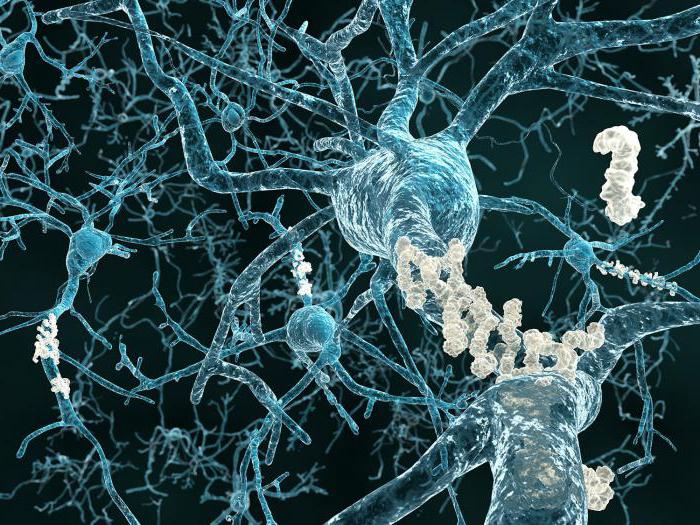
Occurrence of residual organic brain damage in adults
In adulthood, signs of residual organic damage are less common, however, they are present in some patients. Often the cause of such episodes are injuries received in early childhood. At the same time, neuropsychic deviations are long-term consequences. Residual organic brain damage occurs for the following reasons:
- post-traumatic illness. Regardless of when CNS damage occurs, residual (residual) symptoms remain. Often these include headache, convulsive syndrome, mental disorders.
- Condition after surgery. This is especially true of brain tumors, which are removed with the capture of nearby nervous tissue.
- Taking drugs. Depending on the type of substance, the symptoms of residual organic damage may vary. Most often, serious violations are observed with long-term use of opiates, cannabinoids, synthetic drugs.
- Chronic alcoholism.
In some cases, residual organic damage to the central nervous system is observed after suffering inflammatory diseases. These include meningitis, different kinds encephalitis (bacterial, tick-borne, post-vaccination).
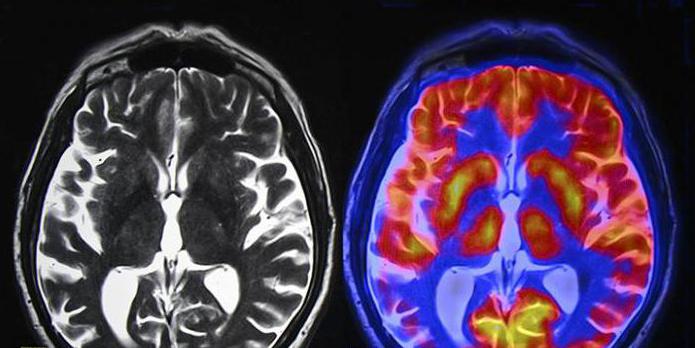
The mechanism of development of CNS lesions
Residual damage to the central nervous system is always caused by adverse factors that preceded earlier. In most cases, the basis of the pathogenesis of such symptoms is cerebral ischemia. In children, it develops during fetal development. Due to insufficient blood supply to the placenta, the fetus receives little oxygen. As a result, the full development of the nervous tissue is disrupted, fetopathy occurs. Significant ischemia leads to intrauterine growth retardation, childbirth ahead of time gestation. Symptoms of cerebral hypoxia can appear already in the first days and months of life. Residual-organic damage to the central nervous system in adults often develops due to traumatic and infectious causes. Sometimes the pathogenesis of nervous disorders is associated with metabolic (hormonal) disorders.
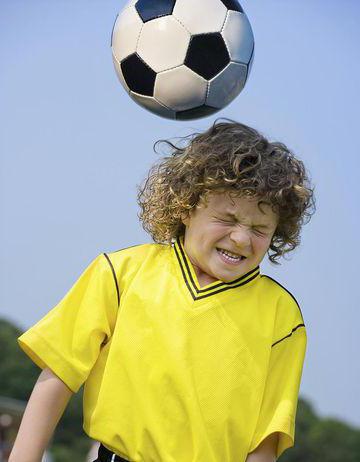
Syndromes with residual-organic lesions of the central nervous system
In neurology and psychiatry, there are several main syndromes that can occur both independently (against the background of a brain disease) and regarded as a residual CNS lesion. In some cases, there is a combination of them. Allocate the following signs residual organic damage:
- Its manifestations are increased fatigue, poor learning school curriculum, general weakness, tearfulness, mood changes.
- It is characterized by the development of phobias, enuresis (uncontrolled urination at night), motor excitation (tics).
- Syndrome of hyperactivity and attention deficit. It is observed in children of primary and secondary school age.
- encephalopathy. The main manifestations are sleep disturbance, memory loss, perseverance. In severe cases, focal neurological symptoms, convulsions are observed.
- Psychopathies. Characterized by disobedience, aggressiveness. In adulthood - mood lability, hysterical reactions, antisocial behavior.
Most often, cerebral hypoxia leads to scattered symptoms, when the listed syndromes are combined with each other, they are not very pronounced. The predominance of focal symptoms is rare.
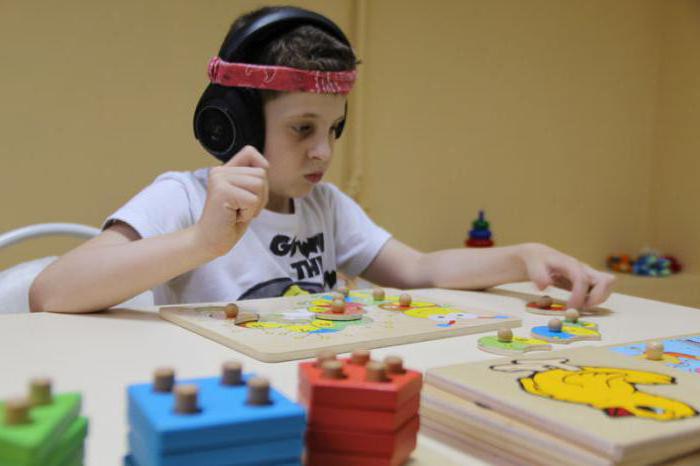
Clinical picture with CNS damage
Most often, the symptoms of residual organic damage to the central nervous system appear some time after exposure to an adverse factor. With perinatal fetal hypoxia, violations can be noticeable already in the first month of life. Depending on the degree of damage, the following symptoms may be observed:
- Minor damage to the nervous tissue: tearfulness, poor sleep, memory loss. AT school age the child may also experience hyperactivity, a tendency to hysterical states, phobias.
- Damage to the central nervous system of moderate severity has such manifestations as constant crying, refusal of the breast, convulsive syndrome, enuresis.
- In severe cases, focal neurological symptoms are observed. It includes muscle weakness, paresis and paralysis of the limbs, delayed physical and mental development, generalized convulsions, etc.
Residual organic lesion of the central nervous system: ICD-10 code
Like all pathologies, a violation of neuropsychic development has a certain code in the international classification of diseases. It is worth understanding the vastness of the concept of "residual-organic lesion of the central nervous system." The code (ICD-10) for this pathology is G96.9. This code means the diagnosis "lesion unspecified". In more specific cases, the ICD-10 code is changed to a specific nosology.

Residual organic lesion of the central nervous system: treatment of pathology
Treatment of residual-organic lesions is aimed at strengthening the nervous system, the rehabilitation of a person in society. It is important to understand that the patient's relatives must be patient. With the right approach, treatment can significantly improve the prognosis of the disease. Nootropic, sedative drugs, antipsychotics, tranquilizers and psychostimulants are used as drug therapy. To improve cerebral circulation, solutions "Piracetam", "Curantil", "Cerebrolysin" are prescribed. Physiotherapy treatment, massage,
What are the consequences of residual organic damage?
The consequences of residual-organic CNS damage depend on the degree of the disease and the approach to treatment. With mild disorders, full recovery can be achieved. Severe damage to the central nervous system is dangerous for the development of conditions such as cerebral edema, spasm of the respiratory muscles, and damage to the cardiovascular center. To avoid such complications, constant monitoring of the patient is necessary.
Disability in residual-organic lesions
Treatment should be started as soon as the appropriate diagnosis is established - "residual-organic lesion of the central nervous system." Disability in this disease is not always assigned. With severe violations and the lack of effectiveness of treatment, a more accurate diagnosis is established. Most often it is "post-traumatic brain disease", "epilepsy", etc. Depending on the severity of the condition, 2 or 3 disability groups are assigned.
Prevention of residual-organic damage to the central nervous system
To avoid residual organic damage to the central nervous system, it is necessary to be observed by a doctor during pregnancy. In case of any deviations, medical attention should be sought. It is also worth refraining from taking medicines, bad habits.
Residual-organic - the consequences of structural damage to the brain and spinal cord of the perinatal period. This period corresponds to the period from 154 days of gestation (22 weeks), when the fetal weight reaches 500 g, to the seventh day after birth. Given the modern possibilities of nursing newborns, it is believed that from now on the child remains viable even with premature birth. However, it remains vulnerable to a variety of pathological effects that can adversely affect the functioning of the nervous system.
Origin of residual-organic pathology of the CNS
Factors that adversely affect the development of the fetus and newborn include:
- chromosomal diseases (mutations and consequences of gametopathies);
- physical factors (poor ecology, radiation, lack of oxygen consumption);
- chemical factors (use of medicines, household chemicals, chronic and acute intoxication with alcohol and drugs);
- malnutrition (starvation, vitamin and mineral depletion of the diet, protein deficiency);
- diseases of a woman (acute and chronic diseases of the mother);
- pathological conditions during pregnancy (preeclampsia, damage to the child's place, anomalies of the umbilical cord);
- deviations in the course of labor (birth weakness, rapid or prolonged labor, premature detachment of the placenta).
Under the influence of these factors, tissue differentiation is disrupted, and fetopathy, intrauterine growth retardation, prematurity are formed, which can subsequently provoke an organic lesion of the central nervous system. The following perinatal pathology leads to the consequences of organic lesions of the central nervous system:
- traumatic;
- dismetabolic;
- infectious.
Clinical manifestations of residual CNS damage
 Clinically, organic damage to the central nervous system in children manifests itself from the first days of life. Already at the first examination, a neurologist can find external signs of brain suffering - tonic disorders, tremor of the chin and arms, general anxiety, and a delay in the formation of voluntary movements. With a gross lesion of the brain, focal neurological symptoms are detected.
Clinically, organic damage to the central nervous system in children manifests itself from the first days of life. Already at the first examination, a neurologist can find external signs of brain suffering - tonic disorders, tremor of the chin and arms, general anxiety, and a delay in the formation of voluntary movements. With a gross lesion of the brain, focal neurological symptoms are detected.
Sometimes signs of brain damage are detected only during additional examination methods (for example,). In this case, they speak of a clinically silent course of perinatal pathology.
Important! In cases where there are no clinical symptoms of organic pathology of the brain, damage to the nervous system, detected using instrumental diagnostic methods, does not require treatment. All that is needed is dynamic observation and repeated studies.
Residual damage to the central nervous system in children is manifested by:
- cerebrasthenic syndrome (rapid exhaustion, unreasonable fatigue, mood lability, lack of adaptation to mental and physical stress, tearfulness, irritability, capriciousness);
- neurosis-like syndrome (tics, enuresis, phobias);
- encephalopathy (decrease in cognitive functions, scattered focal neurological symptoms);
- psychopathy (phenomena of affect, aggressive behavior, disinhibition, reduced criticism);
- organic-psychic infantilism (apato-abulic manifestations, suppression, list, formation of addictions);
- minimal brain dysfunction (motor hyperactivity disorder with attention deficit).
A detailed decoding of the syndromes can be obtained by watching the thematic video.
Treatment of residual CNS damage
Observation of patients with the consequences of an organic lesion of the central nervous system, the treatment of which implies a rather long process, should be comprehensive. Taking into account the progression of the disease and the subtype of its course, a personal selection of therapy for each patient is necessary. Comprehensive monitoring is based on the involvement of doctors, relatives and, if possible, friends, teachers, psychologists, and patients themselves in the correction process.
Main directions medical measures include:
- medical supervision of the general condition of the child;
- regular examination by a neurologist using neuropsychological techniques, testing;
- drug therapy (psychostimulants, neuroleptics, tranquilizers, sedatives, vasoactive drugs, vitamin and mineral complexes);
- non-drug correction (massage, kinesitherapy, physiotherapy, acupuncture);
- neuropsychological rehabilitation (including);
- psychotherapeutic impact on the environment of the child;
- work with teachers in educational institutions and organization of special education.
Important! Comprehensive treatment from the first years of a child's life will help to significantly improve the effectiveness of rehabilitation.
Residual-organic damage to the nervous system is more clearly identified as it matures. They directly correlate with the time and duration of the impact of the damaging factor on the central nervous system.
Residual effects of brain damage in the perinatal period may predispose to the development of cerebral diseases and form a model of deviant behavior. Timely and competent treatment will stop the symptoms, restore the full functioning of the nervous system and socialize the child.
(average rating: 4,00 out of 5)
